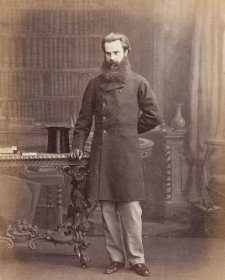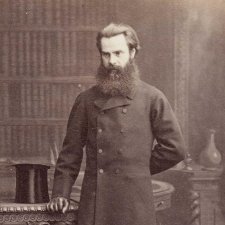- About us
- Support the Gallery
- Venue hire
- Publications
- Research library
- Organisation chart
- Employment
- Contact us
- Make a booking
- Onsite programs
- Online programs
- School visit information
- Learning resources
- Little Darlings
- Professional learning
Sir Charles Nicholson (1808–1903), statesman, landowner, businessman, connoisseur, scholar and physician, was born in unpromising circumstances in Yorkshire. Having graduated brilliantly in medicine at Edinburgh, he moved to New South Wales in 1833, and specialised in obstetrics in Sydney. By 1840, he had begun investing in land, sheep, shipping and railways, and become involved in governance and administration of public institutions. In 1843 he became the member for Port Phillip on the Legislative Council; he was its speaker from 1846 to 1856. At the same time, he was collecting rare books, antiquities, pictures and manuscripts. He was a member of the original senate of the University of Sydney, and as its provost (chancellor) from 1854 to 1862 exerted great influence over its design and development. Over many years he scouted out staff and artefacts for the institution, spending three years in Egypt himself (his own collection forms the basis of the university’s marvellous Nicholson Museum). In 1860 he became the first president of the Legislative Council in the new Queensland, where he had large landholdings. In England from 1862, while engaging in archaeology and collecting, he consulted on Australian affairs. Even in his nineties, he was sending choice volumes to the library of the University of Melbourne.
Collection: National Portrait Gallery
Purchased through the Foundation Acquisitions Fund 2015



On one level The Companion talks about the most famous and frontline Australians, but on another it tells us about ourselves.



28 October 2015
Desperately seeking Woolner medallions



In 2006 the National Portrait Gallery acquired a splendid portrait of Victoria's first governor, Lieutenant Governor Charles Joseph La Trobe by Thomas Woolner.